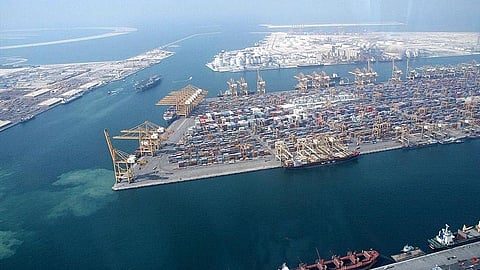Feature: Top 5 Ports in the Middle East
Middle East ports handle nearly 20% of the world’s sea cargo thanks to a strategic geographic location and healthy investments made in port infrastructure.
More-or-less favourable economic conditions for the last 10 years have seen Middle East ports consistently reporting steady increases in both volumes and profits.
On average, from 2011 through 2016, the compounded annual growth rate of container throughput in the Middle East region was 4%1- well above the global average.
The last couple of years has seen Middle East ports delivering mixed performances, but most of them continue to demonstrate a remarkable appetite for future developments and expansions.
In this article, we will endeavour to highlight the Top 5 best performing ports in the Middle East.
1: Jebel Ali
Today, the jewel in the crown of Middle Eastern ports, by far, is Jebel Ali. At 9th place in the global rankings, Jebel Ali continues to remain the busiest port in the region by a very large margin.
Its 2017 container volume of 15.44 million TEU is greater than the combined throughput of all 4 ports in our Top 5 List.
According to DP World reports, work is to begin late this year on a US$1.6 billion fourth terminal that will take the port’s capacity up to 22.1 million TEU in the near future.
Jebel Ali is one of the few existing ports in the Middle East capable of berthing multiple mega vessels that have a carrying capacities of 18,000 TEU or more.
Going from strength to strength Jebel Ali demonstrates every intention to retain the top spot in the region for years to come.
Konecranes Delivers Assets to Jebel Ali
2: Jeddah Islamic Port
Jeddah Islamic Port is the largest port in Saudi Arabia and second on our list with 3.957 million TEU handled in 2017.
Solidifying its position as a global hub, Jeddah Islamic Port welcomed the CMA CGM Jules Verne this year, one of the largest cargo vessels in the world.
Saudi Arabia has the largest and fastest growing consumer goods market in the region.
Couple this with planned rail linkages to the hinterland, and Jeddah Islamic Port is on the fast track for future increases in cargo volumes.
DP World Jeddah upgrades to Navis N4 TOS
3: Khor Fakkan
Although its volumes have come down by 6% in 2017, at 3.8 million TEU, Khor Fakkan Port was still the third busiest port in the Middle East in 2017.
According to the 'DynaLiners Special: The Millionaires' 2018 report, Khor Fakkan has seen a decline of growth by nearly 45% so far in 2018.
However, this year also saw the announcement of a new highway that will connect Sharjah’s Saja’a Industrial Investment Park (SIIP) with Port Khalid, Hamriyah Port, and Khorfakkan Port through Emirates Road.
This road along with a rapidly developing hinterland of Sharjah should provide a boost to the port’s throughput volumes in the coming years.
New UAE Road Set to Open in 2019
4: Salalah
The Port of Salalah in Oman has seen a significant boost in performance in 2017 with volumes increasing by nearly 20% y-o-y to reach 3.325 million TEU.
The first six months of 2018 also saw an increase of 10% over the same period last year with 1.763 million TEU handled.
However, Cyclone Mekunu that hit the port in May this year has caused significant damage to the port’s infrastructure and cargo handling equipment.
The port’s management however, has announced plans to recover lost volumes during the fourth quarter of 2018.
SOHAR Marks Opening of New Refinery
5: Port Said
Egypt’s Port Said saw container volumes come down by nearly 450,000 TEU in 2017. However, the port has retained the fifth spot amongst the regional Top 5 with a throughput of just over 3 million TEU.
In order to encourage container transport from Port Said port to hub port (East Port Said) the Suez Canal authority is offering Egyptian vessels a 30% reduction in crossing dues up to the end of 2018.
The Egyptian government is also building three tunnels under the Suez Canal that will provide better connectivity between Port Said and rest of its hinterland.
The last decade has seen significant growth in regional capacities and cargo volumes thanks to timely investments and the installation of professional managements that have the ability to compete against the best in the world.
The future however, is not without its challenges. The three primary ones being over-capacity, under-utilization and transhipments.
Sources: 1 BCG Research; 2 Lloyds List Top 100 2017; 3 Muscat Daily; 4 All TEU volumes taken from Wikipedia and confirmed from other list such as Lloyds and World Maritime Council Figures.


